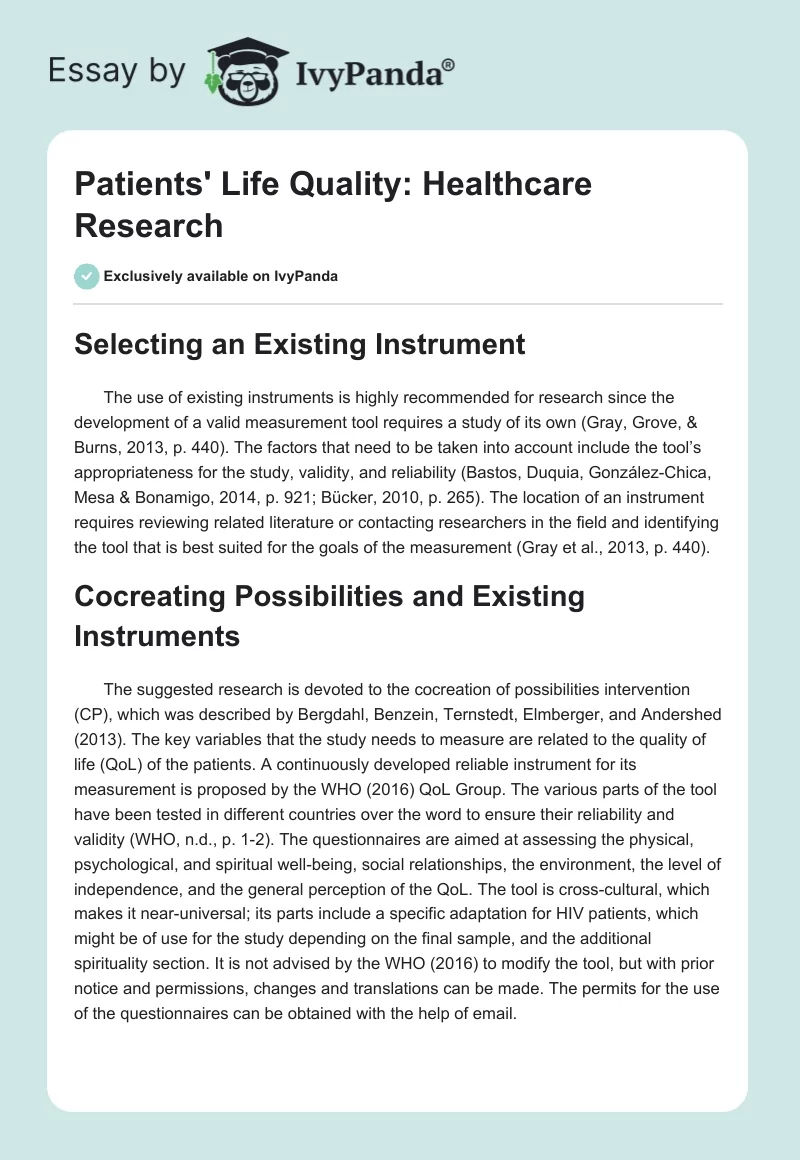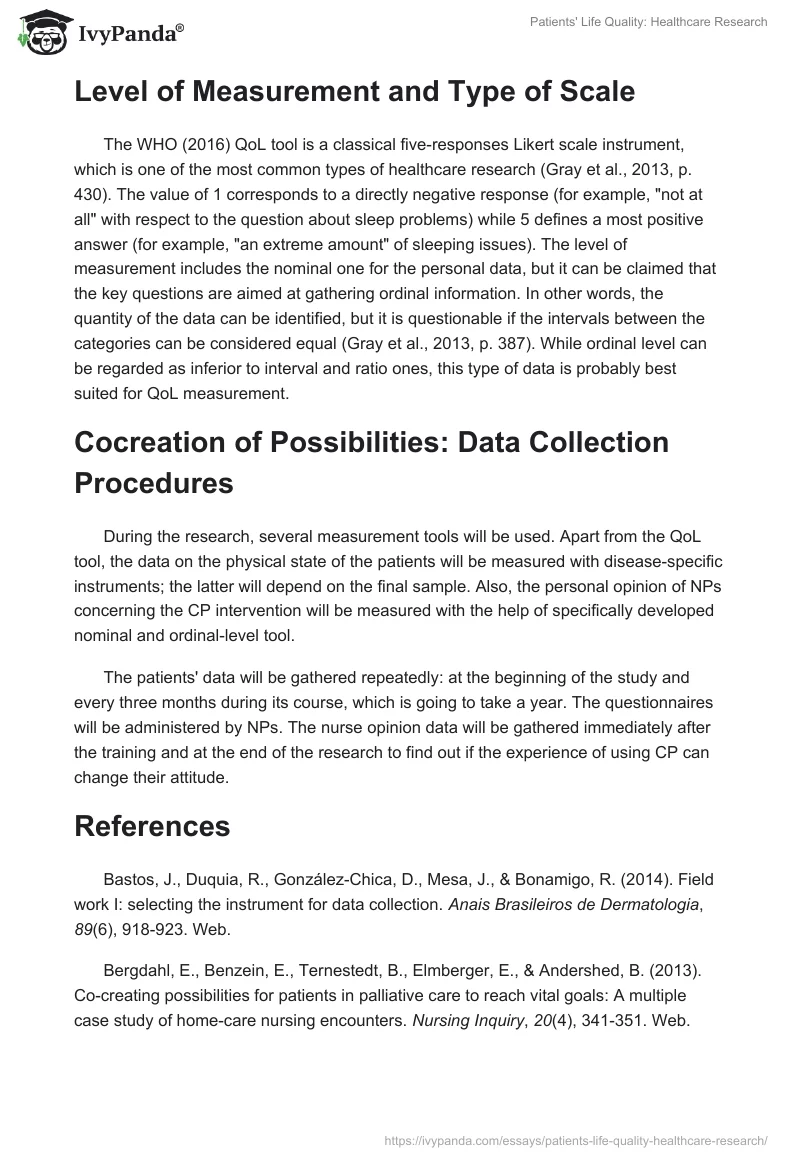Selecting an Existing Instrument
The use of existing instruments is highly recommended for research since the development of a valid measurement tool requires a study of its own (Gray, Grove, & Burns, 2013, p. 440). The factors that need to be taken into account include the tool’s appropriateness for the study, validity, and reliability (Bastos, Duquia, González-Chica, Mesa & Bonamigo, 2014, p. 921; Bücker, 2010, p. 265). The location of an instrument requires reviewing related literature or contacting researchers in the field and identifying the tool that is best suited for the goals of the measurement (Gray et al., 2013, p. 440).
Cocreating Possibilities and Existing Instruments
The suggested research is devoted to the cocreation of possibilities intervention (CP), which was described by Bergdahl, Benzein, Ternstedt, Elmberger, and Andershed (2013). The key variables that the study needs to measure are related to the quality of life (QoL) of the patients. A continuously developed reliable instrument for its measurement is proposed by the WHO (2016) QoL Group. The various parts of the tool have been tested in different countries over the word to ensure their reliability and validity (WHO, n.d., p. 1-2). The questionnaires are aimed at assessing the physical, psychological, and spiritual well-being, social relationships, the environment, the level of independence, and the general perception of the QoL. The tool is cross-cultural, which makes it near-universal; its parts include a specific adaptation for HIV patients, which might be of use for the study depending on the final sample, and the additional spirituality section. It is not advised by the WHO (2016) to modify the tool, but with prior notice and permissions, changes and translations can be made. The permits for the use of the questionnaires can be obtained with the help of email.
Level of Measurement and Type of Scale
The WHO (2016) QoL tool is a classical five-responses Likert scale instrument, which is one of the most common types of healthcare research (Gray et al., 2013, p. 430). The value of 1 corresponds to a directly negative response (for example, “not at all” with respect to the question about sleep problems) while 5 defines a most positive answer (for example, “an extreme amount” of sleeping issues). The level of measurement includes the nominal one for the personal data, but it can be claimed that the key questions are aimed at gathering ordinal information. In other words, the quantity of the data can be identified, but it is questionable if the intervals between the categories can be considered equal (Gray et al., 2013, p. 387). While ordinal level can be regarded as inferior to interval and ratio ones, this type of data is probably best suited for QoL measurement.
Cocreation of Possibilities: Data Collection Procedures
During the research, several measurement tools will be used. Apart from the QoL tool, the data on the physical state of the patients will be measured with disease-specific instruments; the latter will depend on the final sample. Also, the personal opinion of NPs concerning the CP intervention will be measured with the help of specifically developed nominal and ordinal-level tool.
The patients’ data will be gathered repeatedly: at the beginning of the study and every three months during its course, which is going to take a year. The questionnaires will be administered by NPs. The nurse opinion data will be gathered immediately after the training and at the end of the research to find out if the experience of using CP can change their attitude.
References
Bastos, J., Duquia, R., González-Chica, D., Mesa, J., & Bonamigo, R. (2014). Field work I: selecting the instrument for data collection. Anais Brasileiros de Dermatologia, 89(6), 918-923. Web.
Bergdahl, E., Benzein, E., Ternestedt, B., Elmberger, E., & Andershed, B. (2013). Co-creating possibilities for patients in palliative care to reach vital goals: A multiple case study of home-care nursing encounters. Nursing Inquiry, 20(4), 341-351. Web.
Bücker, J. (2010). How to assess global management competencies: An investigation of existing instruments. Management Revue, 21(3), 263-291. Web.
Gray, J., Grove, S., & Burns, N. (2013). The practice of nursing research. London: Elsevier Health Sciences.
WHO. (2016). The World Health Organization Quality of Life (WHOQOL). Web.
WHO. (n.d.). Introducing the WHOQOL instruments. Web.


